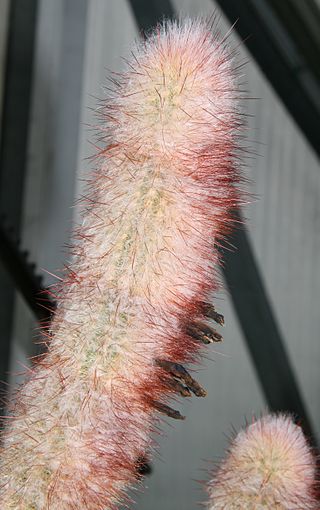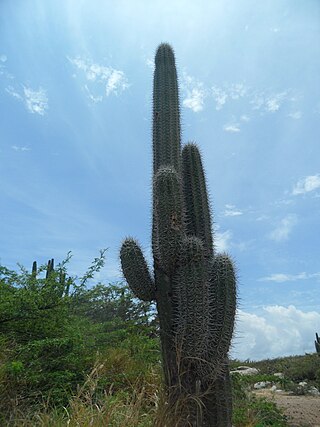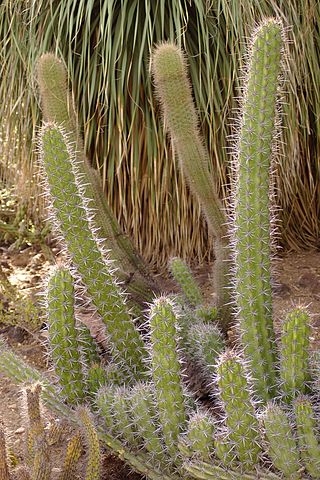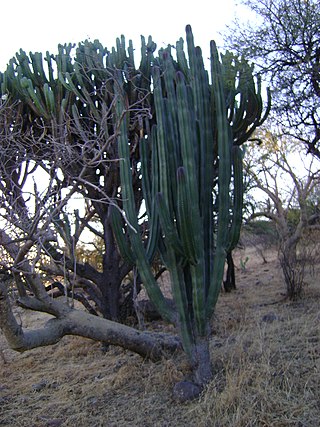
Stenocereus eruca, commonly known as the creeping devil, is a member of the family Cactaceae. It is one of the most distinctive cacti, a member of the relatively small genus Stenocereus.

Isolatocereus is a monotypic genus of flowering plant in the family Cactaceae. The only species is Isolatocereus dumortieri that is found in Mexico.

Micranthocereus violaciflorus is a species of plant in the family Cactaceae. It is endemic to Brazil.

Stenocereus alamosensis is a species of cactus native to Mexico.

Stenocereus griseus, also known as the Mexican organ pipe, dagger cactus, pitaya, and pitayo de mayo, is a species of cactus.

Echinocereus chisoensis is a rare North American species of cactus known by the common name Chisos Mountain hedgehog cactus.

Pachycereus pecten-aboriginum is a columnar cactus plant native to Mexico. They can grow up to 15 m (49 ft) high. The trunk of this species is 1.2 to 5.0 m tall and the fruits are large and burr-like. The specific name, pecten-aboriginum, is from the Latin, and means "native combs". It was inspired by the use of the fruits as hair combs.

Cleistocactus tominensis is a species of columnar cactus in the genus Cleistocactus, endemic to Bolivia, where it is found in forests, on cliffs, and in inter-Andean valleys at altitudes of 900 to 2,200 meters.

Stenocereus gummosus is a flowering plant in the family Cactaceae that is found in Baja California, Mexico at elevations of 9 to 134 meters

Stenocereus stellatus is a flowering plant in the family Cactaceae that is found in Oaxaca, Mexico

Stenocereus montanus, known as sahuira, is a species of columnar cactus in the family Cactaceae.

Stenocereus heptagonus is a species of cactus.
Stenocereus martinezii is a species of flowering plant in the family Cactaceae, native to Sinaloa in Mexico. A candelabriform cactus typically 5 to 7 m tall, it is easy to propagate from cuttings, so local people use it to build live fences.

Melocactus bahiensis is a species of Melocactus found in Bahia, Brazil.

Pachycereus weberi is a columnar cactus plant native to Mexico.

Stenocereus treleasei, commonly known as tunillo, is a species of flowering plant in the family Cactaceae, native to Oaxaca in Mexico.

Cephalocereus macrocephalus, synonym Neobuxbaumia macrocephala, is a species of cactus endemic to Mexico.
Stenocereus fricii is a species of cactus in the genus Stenocereus, endemic to Mexico.
Stenocereus chacalapensis is a species of cactus in the genus Stenocereus, endemic to Mexico.
Stenocereus zopilotensis is a species of cactus in the genus Stenocereus, endemic to Mexico.
















